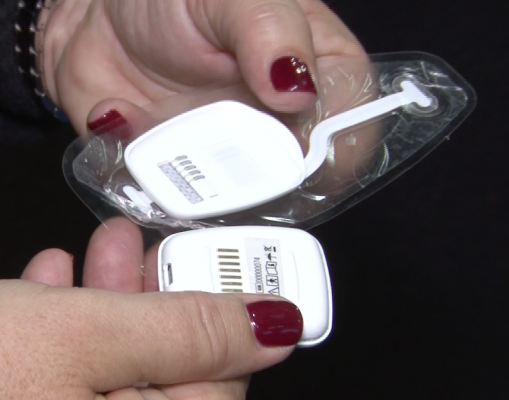
The aim of this study was to investigate the average time from the occurrence of an arrhythmic event to physician notification in a patient with an ICM. The main indications for the implantation of ICMs include life-threatening arrhythmias and any delay in data transmission may have serious consequences. ĭespite its ability to provide constant cardiac monitoring and their ability to transmit data on a daily basis, no study has been done to explore the timeliness of data transmission from ICMs. This reliance on using an external monitor to transmit data is also used in other companies of ICMs including Biotronik’s Home Monitoring, Abbot’s TM transmitter and Boston Scientific’s Latitude Home Monitoring. It has been recommended by Medtronic that the M圜areLink TM monitor should be within 6 feet of the patient during the 0200-daily download. The M圜areLink TM monitor will then attempt to connect to a 3G cellular network for data transmissions ( Figure 1). The data is firstly downloaded into the M圜areLink TM monitor on a daily basis at 0200.

Medtronic’s reveal LINQ ICM functions in this way as data transmission consists of a two-step process. Once the ICM has been implanted, the patient also receives an additional external monitor that will assist in delivering the data securely. Most current ICMs on the market require multiple steps to ensure the transmission of the intracardiac data to a physician’s office. While ICMs do provide continuous cardiac monitoring, the data do not always immediately sent a health care provider. By implanting a small ICM in patients, physicians are given around the clock cardiac monitoring which can help diagnose disease and dictate management. The benefit of these ICM rests on the ability of physicians to receive timely reports about potential arrhythmias that may not have been detected by traditional means or in an otherwise asymptomatic patient. The CRYSTAL-AF study showed the value of ICMs in detecting occult AF in cryptogenic stroke patients. The use of ICM has also been established in long term atrial arrhythmia monitoring in patients at risk of atrial fibrillation. Previous reports of older generation ICMs, demonstrated its benefit in atrial fibrillation (AF) surveillance for patients who underwent AF ablation. Cryptogenic stroke, unexplained syncope and arrhythmia surveillance are the most common indications for implantation of a long term ICM. Implantable cardiac monitors (ICM) are an invaluable tool for diagnosing cardiac Arrhythmias. This technology could potentially improve efficiency and reliability eliminating the issues of proximity and connectivity.
LINQ HEART MONITOR BLUETOOTH
Newer generations of the implantable cardiac monitors utilize Bluetooth technology, enabling immediate transfer of data from ICM to a patient’s cellular phone and subsequently to their physician’s office. Conclusion: Significant delay in data transmission from Medtronic Reveal LINQ TM cardiac monitor occurs frequently impacting patient care. Connection failure between the monitor and the network accounted for 34% of data transmission delay. Sixty-three percent (63%) of data transmission delay (defined as >24 hours) was due to the M圜areLink TM Monitor not being in proximity to the patient. The mean time between cardiac events and physician notification was 15 ± 8 days. Results: One hundred and twenty patients out of 520 patients (23%) had arrhythmic events transmitted over a mean follow up of 14 ± 4 months. The time from the arrhythmic event to the time of physician notification was calculated and reason for delay was noted. Methods: There is a retrospective review of 520 patients who received a Medtronic Reveal LINQ TM between and. However, no reports have been published as to how efficiently the ICM data is transmitted.

Then, the clinical event can be analyzed and the treatment will be provided accordingly. Critical to the success of ICMs depends on how quickly and accurately the data can be transmitted to a physician’s office after an arrhythmic event. Background: The Implantable Cardiac Monitor (ICM) is an invaluable tool for detecting cardiac arrhythmias by providing physicians.


 0 kommentar(er)
0 kommentar(er)
